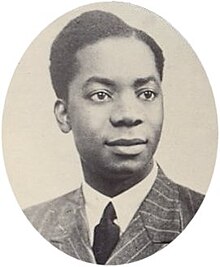
Ghana, officially the Republic of Ghana, is a country in West Africa. It abuts the Gulf of Guinea and the Atlantic Ocean to the south, sharing borders with Ivory Coast in the west, Burkina Faso in the north, and Togo in the east. Ghana covers an area of 239,567 km2 (92,497 sq mi), spanning diverse biomes that range from coastal savannas to tropical rainforests. With over 32 million inhabitants, Ghana is the second-most populous country in West Africa. The capital and largest city is Accra; other cities are Kumasi, Tamale, and Sekondi-Takoradi.
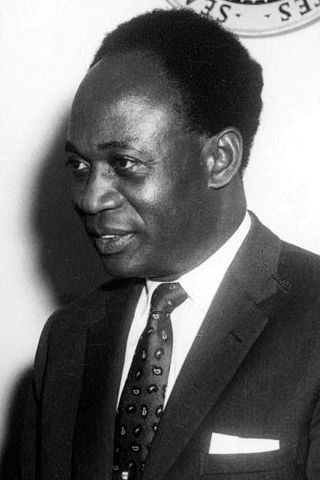
Francis Kwame Nkrumah was a Ghanaian politician, political theorist, and revolutionary. He was the first Prime Minister and President of Ghana, having led the Gold Coast to independence from Britain in 1957. An influential advocate of Pan-Africanism, Nkrumah was a founding member of the Organization of African Unity and winner of the Lenin Peace Prize from the Soviet Union in 1962.

The national flag of Ghana consists of a horizontal triband of red, yellow, and green. It was designed in replacement of the British Gold Coast's Blue Ensign.

Sylvanus Épiphanio Olympio was a Togolese politician who served as prime minister, and then president, of Togo from 1958 until his assassination in 1963. He came from the important Olympio family, which included his uncle Octaviano Olympio, one of the richest people in Togo in the early 1900s.

Komla Agbeli Gbedemah was a Ghanaian politician and Minister for Finance in Ghana's Nkrumah government between 1954 and 1961. Known popularly as "Afro Gbede", he was an indigene of Anyako in the Volta Region of Ghana.

The Ewe people are a Gbe-speaking ethnic group. The largest population of Ewe people is in Ghana, and the second largest population is in Togo. They speak the Ewe language which belongs to the Gbe family of languages. They are related to other speakers of Gbe languages such as the Fon, Gen, Phla Phera, Gun, Maxi, and the Aja people of Togo, Benin and southwestern Nigeria.
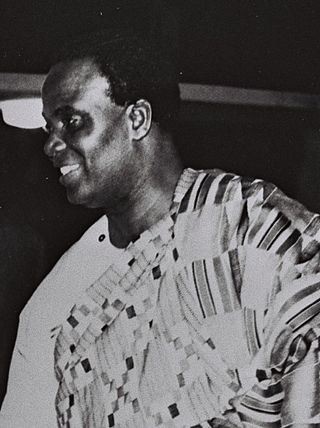
Kojo Botsio was a Ghanaian diplomat and politician. He studied in Britain, where he became the treasurer of the West African National Secretariat and an acting warden for the West African Students' Union. He served as his country's first Minister of Education and Social Welfare from 1951, as Minister for Foreign Affairs twice in the government of Kwame Nkrumah, and was a leading figure in the ruling Convention People's Party (CPP).
Joseph Emmanuel Appiah, MP was a Ghanaian lawyer, politician and statesman.
Articles related to Ghana include:
John Willie Kofi Harlley was a Ghanaian police officer who was Vice Chairman of the National Liberation Council and the first Inspector General of Police in Ghana from 1966 to 1969. He was a member of the three-man presidential commission which carried out presidential functions during the 1969 democratic transition in Ghana and in the first year of the Second Republic.
The Anlo Youth Organisation was a political party that existed in the Gold Coast and later Ghana. It campaigned for the Ewe people under British rule to stay within Ghana after independence. It ended by merging with other parties to form a united opposition to the Convention People's Party.

The strains in Ghana–Togo relations stretch back to pre-independence days.
Kwame Sanaa-Poku Jantuah, originally known as John Ernest Kwame Antoa Onyina Jantuah, was a Ghanaian politician, lawyer and diplomat. He was the last survivor from the first all-African cabinet set up by Kwame Nkrumah in the Gold Coast prior to independence.
The Accra Evening News was a daily newspaper established in the Gold Coast in 1948 by Kwame Nkrumah. The paper's appearance marked the foundation of the press in the country as a powerful means to mobilize people, and was followed by publication of the Morning Telegraph of Sekondi appeared in January 1949, and then the Daily Mail of Cape Coast.
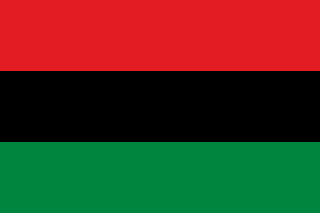
Nkrumaism is an African socialist political ideology based on the thinking and writing of Kwame Nkrumah. Nkrumah, a pan-Africanist and socialist, served as Prime Minister of the Gold Coast from 1952 until 1960 and subsequently as President of Ghana before being deposed by the National Liberation Council in 1966.

The history of African Americans in Ghana goes back to individuals such as American civil rights activist and writer W. E. B. Du Bois (1868–1963), who settled in Ghana in the last years of his life and is buried in the capital, Accra. Since then, other African Americans who are descended from slaves imported from areas within the present-day jurisdiction of Ghana and neighboring states have applied for permanent resident status in Ghana. As of 2015, the number of African-American residents has been estimated at around 3,000 people, a large portion of whom live in Accra.

The Ewe Unification Movement was a series of west African ethno-nationalist efforts which sought the unification of the Ewe peoples spread across what are now modern Ghana and Togo. It emerged as a direct political goal around 1945 under the colonial mandate of French Togoland, however the ideal of unifying the group has been an identifiable sentiment present amongst the ethnicity's leadership and wider population ever since their initial colonial partitions by the British and German Empires from 1874 to 1884. While there have been many efforts to bring about unification, none have ultimately been successful due to both the platform itself often being a secondary concern for political leadership, or inter/intrastate conflicts overshadowing them.
Daniel Ahmling Chapman Nyaho was a Ghanaian statesman, diplomat and academic. He was the first African appointee at the United Nations. He served as the Secretary to the cabinet in the first Convention People's Party government which shared the colony's administration with the colonial government. He also served as Ghana's ambassador to the United States of America and Ghana's permanent representative to the United Nations. In 1958, he became the first Ghanaian headmaster of Achimota College.
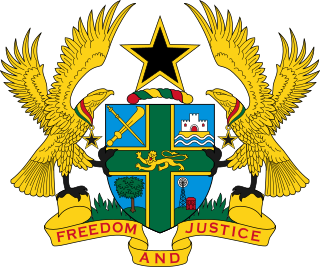
The Political history of Ghana recounts the history of varying political systems that existed in Ghana during pre-colonial times, the colonial era and after independence. Pre-colonial Ghana was made up of several states and ethnic groups whose political system was categorized by 3 main administrative models; Centralized, Non-centralized and Theocratic states. In the colonial era, the British Empire employed different forms of government among its four territorial possessions in the Gold Coast. Indirect rule was implemented in the late 19th century after its success in Northern Nigeria. From the 1940s, native Ghanaians yearned for more autonomy. This resulted in the several constitutional reforms as well as the creation of the office of the Prime Minister in 1952.
Kodzo Afelete Ayeke was a Ghanaian politician, teacher, journalist, lawyer, and author. He was a member of parliament for Ho West, getting twice elected into parliament in 1954 and 1956 as a Togoland Congress member before joining the United Party on the ban of the Togoland Congress in 1958. As a journalist, he founded the Togoland Vanguard the first ever newspaper in the then Trans-Volta Togoland. An ethnic Ewe, he published two novels in the Ewe language, Asitsu Atoawo and Hlobiabia.
